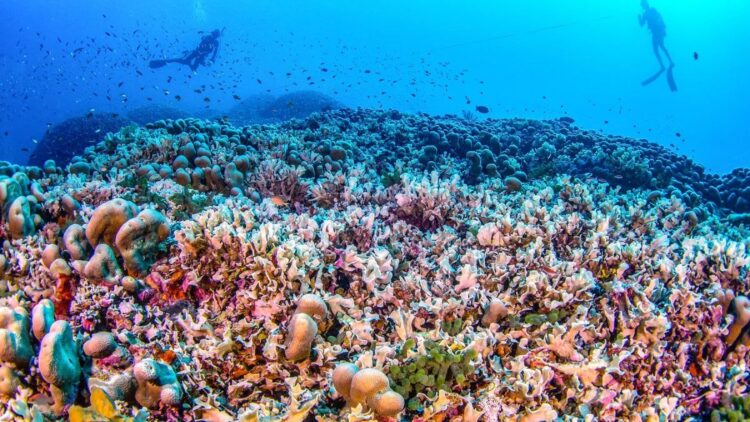Incredible! The Largest Living Being In History Is Hiding Under The Sea: It Is 34 Meters Long
In a stunning revelation, scientists have discovered the largest living being on Earth concealed beneath the warm waters of the Solomon Islands.
This coral colony, measuring 34 meters (112 feet) wide and 32 meters (105 feet) long, is not just a marvel of size but also a reminder of the resilience of marine life.

With an estimated age of nearly 300 years, this single entity composed of millions of polyps serves as a testament to survival amid a global reef crisis.
A giant coral colony unearthed
The coral, scientifically identified as Pavona clavus, was revealed during a National Geographic Pristine Seas expedition led by underwater photographer Manu San Félix.
Initially exploring what was believed to be a shipwreck site, the team stumbled upon this underwater giant, an organism so large that it can even be seen from space.
In contrast to typical coral reefs that consist of multiple genetically distinct colonies, this organism is in fact a single entity, showcasing the incredible diversity of life that can exist within a single species.
“It is impressive to see something so big and so old—around 300 years old—bouncing back through such significant changes in the environment,” says San Félix, emphasizing this coral colony’s incredible ability to endure.
This discovery not only breaks records but also highlights the vast unexplored areas of our oceans, prompting questions about what other wonders might still be hidden beneath the waves.
A symbol of hope amidst climate challenges
The timing of this discovery is critical, as coral reefs worldwide are facing unprecedented threats due to climate change.
Rising ocean temperatures lead to coral bleaching, a process that expels the vital algae necessary for coral survival, resulting in starvation and death.
Alarmingly, over 40% of hard corals are projected to be at risk of extinction, and many reefs are already suffering the consequences.
Nevertheless, this newly discovered coral colony offers a beacon of hope.
Thriving in deeper, cooler waters, this superorganism may possess genetic traits that enable it to withstand environmental stresses that have devastated other coral species.
As marine ecologist Maria Beger from the University of Leeds notes, “Anything old is really good at surviving,” suggesting that studying this coral could provide insights into fortifying other reefs against future threats.
Coral conservation efforts have been ignited
The significance of this monumental find has impelled local conservation efforts in the Solomon Islands.
Local tribes have petitioned the government to formally protect the waters surrounding the Malaulalo area, recognizing the ecological value of this giant coral colony.
Climate Minister Trevor Manemahaga has emphasized the importance of coral reefs to the nation’s economy and ecology, advocating for sustainable practices to combat destructive activities such as logging.
By raising awareness of the ecological value of coral reefs, the discovery of this immense organism could serve as a catalyst for broader conservation projects.
As multiple stakeholders rally around the need for urgent action, there is hope that this coral colony will not only inspire local preservation efforts but also contribute valuable knowledge to protect and restore coral ecosystems worldwide.
The discovery of the largest living being in history stands as both a scientific marvel and a rallying point for action.
This incredible coral colony reveals the extraordinary resilience of nature in the face of climate change challenges.
As we work to protect our seas and their diverse ecosystems, the insights gained from this coral will be crucial in guaranteeing that future generations can continue to appreciate the wonders of the underwater world.
Together, we can champion conservation efforts and preserve the delicate balance of marine life for years to come.



